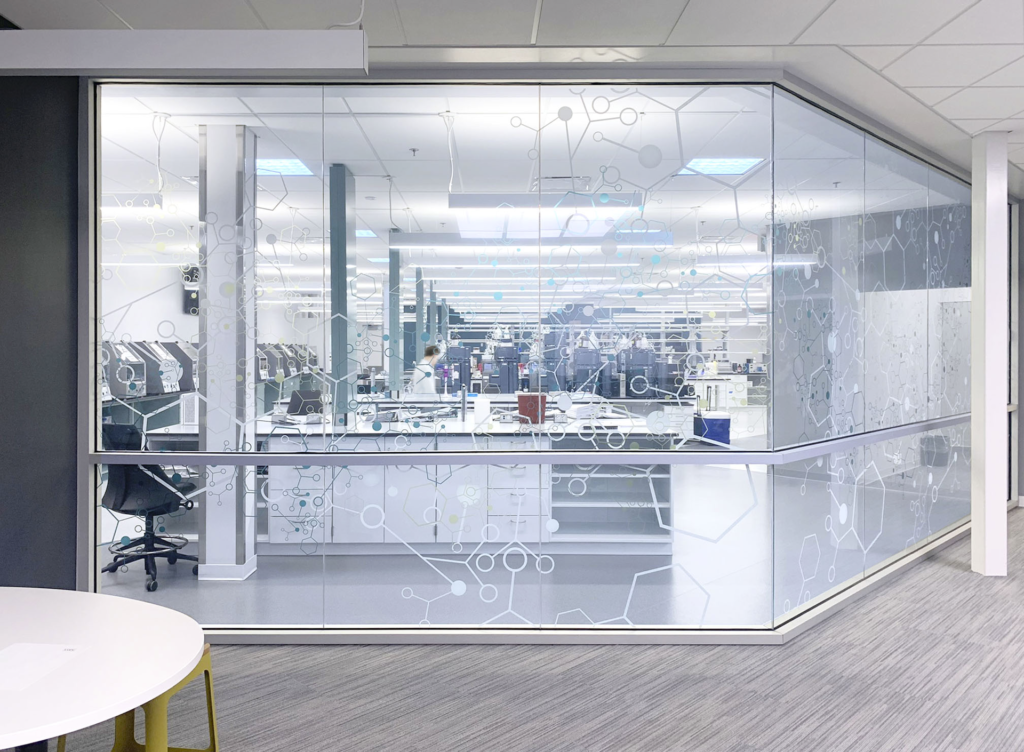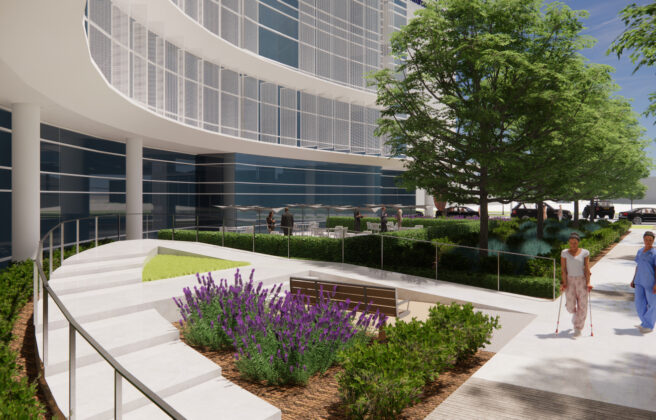The folks in lab design at BWBR have no trouble seeing common ground between their work as designers and their scientist clients’ work. In both cases, it’s about coming up with innovative, out-of-the-box, and creative solutions to intricate technical challenges.
Newly-appointed BWBR President and CEO Terri Ulrick, and Brian Lapham and Nate Roisen, both Senior Project Managers, are all highly experienced in lab planning. They excel at blending the technical side of planning functional environments with inspiring aesthetics, collaborating with scientists across markets and industries. Their job: Create spaces where scientific exploration flourishes.
What’s it like being a lab designer? What types of spaces do they design for? What makes lab design such a fun challenge? And how is it to work in a field that is changing so much so quickly? We covered all that and more in this fascinating conversation.
Whose Lab is it Anyway?
When you hear the word “lab,” you might picture your science class from school, or you might imagine a high-tech R&D facility for a major corporation—and either would be correct. BWBR designs labs for both higher education and corporate settings. We work on buildings dedicated to a single subdiscipline, as well as where multiple subdisciplines need to coexist seamlessly together. In a corporate setting, there might be an entire lab dedicated to a single product or project, or dozens of projects in progress simultaneously.
In short, there’s a vast range of applications for lab design, and no two projects are exactly alike. As Nate explains, in some design fields, there’s an opportunity for some replication between projects—you figure out what works within a given scenario and apply that framework to the next project so you can dive straight into the details. That’s not the case in lab design. While the team takes their previous experience into each new project, each space is completely customized down to the most intricate details.
Digging into the Details
In a lab setting, the details are critical. That’s true whether it’s a lab designed for microbiology, chemistry, engineering, or one of the myriad other subdisciplines. It’s true whether it’s a student running their first experiment or a highly trained specialist looking to make a significant breakthrough.
In most lab settings, there’s a challenging mix of static equipment, dynamic equipment, people, and materials. Hazardous waste is often produced, along with considerations of ventilation, humidity, light exposure, temperature, compressed air, high-voltage power, and other environmental and safety factors. Certain materials are strictly regulated regarding how they can be transported, stored, and removed, and all of this affects the flow of a space.
In an academic setting, designers need to accommodate flexible spaces for observation, learning, and doing, as well as potentially replicating real-life working laboratory environments. “This is the place where graduate and undergraduate students are learning the science for the very first time. These labs not only have to be able to do the science in them, but also hold a class of students,” Brian says. Meanwhile, in a corporate setting, lab spaces are highly specified to manufacture and develop products by professional scientists. In these environments, it’s all about delving deeply into the scientists’ processes and workflows. The level of variance is what makes the job so dynamic and exciting.
Engineering the Perfect Puzzle
Lab planning and design can feel like one big puzzle. Scientists often have big ideas they haven’t fleshed out yet, or they aren’t sure what they need or what that might look like. That’s where the lab planners step in, sketching out the blueprint from scratch and working closely with the scientists to fit the puzzle pieces together.
But these aren’t the kind of puzzles that get lacquered and saved forever once completed. Science and technology are evolving at rapid speeds, with new ideas and processes constantly emerging. “We’ve had projects where we might be designing for a particular type of research, and then maybe that doesn’t come to fruition, and they change paths,” says Terri. Redesigning throughout the process is common in lab spaces—sometimes even after construction has begun. “Being nimble and flexible is really important,” she says. The team’s range of experience and deep understanding of how lab environments function is key to skillfully adapting while keeping designs moving.
The Ideal Formula
Although lab planning requires a special mix of creativity, flexibility, and technical skill, our team is more than up for the challenge. They pride themselves on working collaboratively with their clients as well as learning from others at BWBR. “Part of our culture at the firm is that we share with each other, so we get a lot of context from other disciplines,” Brian says. Our firm’s work in markets like healthcare and workplace can certainly bring fresh perspectives and unique strategies to help inform science and technology environments. Plus, BWBR employs two former scientists who now work as designers, and they’ve proven to be a great resource in helping the team bridge the gap between design and science.
Of course, design itself is both art and science. Precision is essential, especially for a lab project, but the team doesn’t forget aesthetics. “We want to create spaces that are highly functional but also that inspire,” Terri says. It’s essential that labs are comfortable, pleasing environments that students and professionals enjoy spending time in and that fully support their holistic needs.
The Future of Lab Planning
What’s coming down the road for lab planning? That depends. As we all know, the landscape is changing rapidly on multiple fronts. The team at BWBR challenges themselves to keep pace with the evolving industry, but they also know they need to stay adaptable. Sometimes, that means building space intended to accommodate lab projects for decades to come. Sometimes, they need to develop a design that can be executed immediately so a corporation can promptly get a product to market.
It’s no wonder this field attracts top talents who thrive on challenges and constant change. “Lab planning is really fun, whether you’re thinking about the visual character of the spaces or getting into the puzzle of a workflow in the programming process.” Nate says. “I have a tough time imagining a job that’s more fun than the one I get to do every day.”








